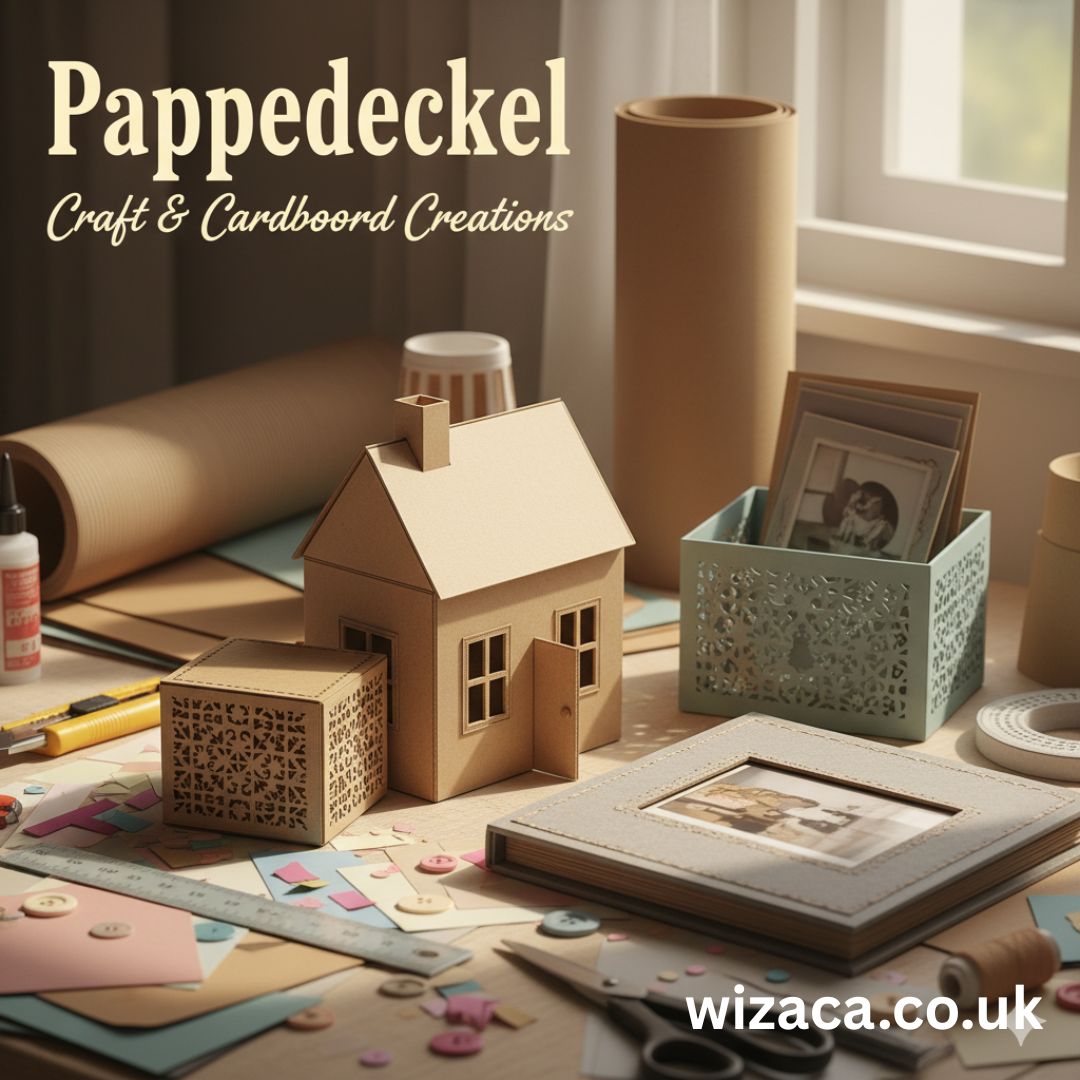Introduction
The term Pappedeckel is a colloquial German word that literally means cardboard lid. In everyday life, it is often used to describe disposable beer mats, coasters, or sometimes simple cardboard covers placed over containers. The word reflects Germany’s long tradition of beer culture and hospitality, where small details such as a coaster made from cardboard are essential to the drinking experience.
Beyond its literal meaning, Pappedeckel has also found its way into cultural expressions, jokes, and even music. One of the most famous cultural references is the German carnival song Am Aschermittwoch ist alles vorbei, which uses the phrase “Jupp, der Pappedeckel” as a humorous symbol of ordinary life.
Because of its strong connection to daily habits, beer culture, and materials like cardboard, the word Pappedeckel represents more than a simple object; it symbolizes traditions, sustainability, and even social interaction.
Etymology and Meaning
The German word Pappedeckel can be broken down into two components:
- Pappe – meaning cardboard or board made of paper pulp. (Cardboard)
- Deckel – meaning lid or cover. (Lid)
Together, they describe a lid or cover made from cardboard. However, in German colloquial speech, the term is most commonly associated with coasters used in bars, restaurants, and beer halls. These coasters are placed under glasses of beer to protect the table surface and to absorb any condensation or spills.
Historical Background of the Beer Mat
The modern Pappedeckel owes its popularity to the history of the beer mat. The first commercial beer mats were made in Germany in the late 19th century. They were typically round, made of cardboard, and quickly became a standard item in pubs and breweries.
Beer mats served two purposes:
- Practical – keeping tables clean and dry.
- Promotional – breweries often printed logos, slogans, or artwork on them.
This combination of practicality and advertisement helped them spread throughout Europe and eventually the world. According to historical accounts, the company Friedrich Horn in Dresden was one of the pioneers in producing such mats. Today, collectors of beer mats exist all over the world, treating them as cultural and historical artifacts.
Pappedeckel in German Culture
Germany has a strong tradition of beer culture, with famous events like Oktoberfest and centuries of brewing heritage. In such a culture, even small objects like a cardboard coaster can take on symbolic value.
- Carnival Songs: In Cologne’s carnival traditions, the word Pappedeckel often appears in humorous songs. The playful sound of the word makes it a favorite for rhymes and jokes.
- Dialect and Slang: In some regions, calling someone a Pappedeckel can be a lighthearted insult, implying that the person is simple or not very clever.
- Everyday Use: In restaurants and beer gardens, the number of coasters under a glass is sometimes used to count how many drinks a customer has consumed, making it part of the informal payment system.
Material and Production
The Pappedeckel is usually made from absorbent cardboard, which is pressed and cut into circular or square shapes. Typical features include:
- Thickness: Designed to absorb liquid but still remain firm.
- Shape: Round or square, depending on regional preferences.
- Prints: Logos, colorful designs, or even seasonal artwork.
Cardboard itself is a versatile material. As explained in the cardboard article, it is widely used for packaging, storage, and disposable products because it is lightweight, inexpensive, and recyclable. The Pappedeckel is a classic example of how cardboard can serve both functional and cultural purposes.
Environmental Perspective
One of the advantages of the Pappedeckel is its environmental sustainability. Unlike plastic coasters, cardboard coasters are biodegradable and recyclable. In an era when environmental issues such as recycling and waste reduction are increasingly important, the humble Pappedeckel stands as a small but positive example of eco-friendly design.
Some breweries and bars have even begun producing coasters with messages about sustainability, reminding customers of their role in reducing waste.
Pappedeckel as a Collector’s Item
What might appear to be an ordinary cardboard coaster is, for some people, a valuable collectible. The hobby of collecting beer mats is known as tegestology (from the Latin teges, meaning cover). Collectors, called tegestologists, often exchange, catalog, and preserve beer mats from around the world.
For these enthusiasts, Pappedeckel is not only about beer but also about history, art, and design. Each coaster tells a story about the brewery, the region, and sometimes even political or cultural events printed on it. This has elevated the Pappedeckel from disposable item to cultural artifact.
Cultural Comparisons
While Germany is most strongly associated with the word Pappedeckel, other cultures also use beer mats or similar items.
- In Britain, beer mats are widespread in pubs.
- In the United States, they are often used in breweries and bars, sometimes made from thicker cardboard.
- In Japan, coasters may be made from wood or bamboo, reflecting different material traditions.
However, the German Pappedeckel is unique for its linguistic charm and its deep integration into social and cultural practices.
Symbolism and Idioms
The word Pappedeckel has also found metaphorical use. Because it refers to something simple, cheap, and easily disposable, it can be used in jokes or idioms to describe triviality. For example, someone might say:
- “Das ist doch nur ein Pappedeckel!” – meaning “That’s just a piece of cardboard!” to downplay importance.
Such expressions show how everyday objects influence language and humor.
Future of the Pappedeckel
Despite the rise of digital culture, the Pappedeckel remains relevant. Its uses may evolve, but it is unlikely to disappear soon. Future trends include:
- Customization: Personalized coasters for weddings, events, or promotions.
- Eco-Innovation: Use of recycled paper, eco-friendly inks, and biodegradable coatings.
- Digital Integration: QR codes printed on coasters linking to menus, apps, or promotions.
Thus, the Pappedeckel continues to adapt while holding onto its traditional role in beer culture.
Conclusion
The German word Pappedeckel may seem simple, but it carries deep cultural meaning. It is a cardboard coaster that reflects Germany’s strong beer tradition, creativity, and even humor. From cardboard manufacturing to Oktoberfest celebrations, from sustainability to collecting hobbies, the Pappedeckel plays many roles.
Far from being a throwaway item, it is an example of how ordinary objects shape daily life and cultural identity. In its modest way, the Pappedeckel is a symbol of practicality, tradition, and even joy.










